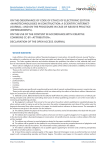Статьи журнала - Nanotechnologies in Construction: A Scientific Internet-Journal
Все статьи: 409
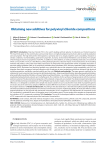
Obtaining new additives for polyvinyl chloride compositions
Статья научная
Introduction. Polyvinyl chloride (PVC) is the world's leading synthetic polymer in industrial use. Products based on PVC have firmly taken on the world market, and currently there is no highly developed country that is able to avoid its production and consumption. The high demand for thermoplastics is primarily due to its unique properties such as durability, resistance to climatic conditions, low flammability, good barrier properties, economy, environmental friendliness and versatility. The complex of technological and service properties of soft PVC, in addition to other additives, is mainly provided by plasticizers, the content of which can reach 50% or more. It is the efficiency of the plasticizing that has a decisive impact on the characteristics in the resulting materials and products. One of the most widely used classes of compounds in the plasticization of PVC are phthalic acid esters, in particular, dibutyl phthalate (DBP), di-(2-ethylhexyl)-phthalate (dioctyl phthalate, DOP), diisononyl phthalate (DINP) and diisodecyl phthalate (DIDP). Phthalates have found the greatest use as plasticizers due to their properties: good compatibility with PVC, low migration from plastic compound, minimal interaction with the polymer at room temperature, good frost resistance, high electrical insulating properties, availability, manufacturability and low cost. Methods and materials. The paper presents methods for the obtaining of novel symmetrical and asymmetric phthalate plasticizers: dibenzoxyethyl phthalates, benzylbenzoxyethyl phthalates, phenoxyethylbenzoxyethyl phthalates, ethoxyoctylbenzoxyethyl phthalates – by catalytic esterification of phthalic anhydride with oxyethylated phenylcarbinols, phenols and 2-ethylhexanols. The conditions for the synthesis of target products with the maximum yield were selected. The physicochemical properties of the obtained compounds were studied. The obtained experimental data were used to identify promising novel plasticizers of the phthalate type by cluster analysis. Cluster analysis for decision making is the most effective, as it is designed to combine some samples into classes (clusters) in such a way that the most similar in properties get into one cluster, but at the same time, samples of different clusters differ from each other as much as possible. Clustering carried out in the program Statistica 10. Results and discussion. According to the data obtained, it is found that benzylbenzoxyethyl phthalates and ethoxyoctylbenzoxyethyl phthalates have the best characteristics in terms of plasticizing ability. We study the influence of the selected plasticizers on the physical and mechanical characteristics of PVC compositions The effectiveness of compounds in the PVC composition is evaluated in terms of “elongation stress” and “breaking stress”. The test results of the samples are compared with the indicators of PVC compounds containing DBP. Conclusion. The use of the developed additives contributes to the production of PVC compounds with improved physical and mechanical characteristics.
Бесплатно
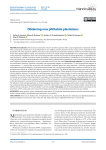
Obtaining new phthalate plasticizers
Статья научная
Introduction. The increase in production volumes and the expansion of the scope of application of polyvinyl chloride (PVC) compounds contributes to the development of new additives and the attraction of new sources of raw materials for their production. The most important additives necessary for processing PVC are plasticizers. Plasticizers market is one of the largest segments of the global additives market. Since plasticizers are the most simple, cheap and affordable way to modify various properties of the polymeric compositions, their role in processing polymeric materials has recently increased significantly. In application the ester plasticizers, capable to plasticize almost all polymers, especially polyvinylchloride are considered as the most practical. Currently, the industry has mastered production of more than three hundred brands of plasticizers, most of which are esters of phthalic acid. Traditional phthalate plasticizers are the most widely used all over the world. Materials and methods. The paper describes the esterification reactions of phthalic anhydride with oxyethylated (degree of oxyethylation 1.2) and oxypropylated (degree of oxypropelation 1.1) cresols. New symmetric and asymmetric phthalate plasticizers were obtained – dikresoxycresylphthalate, butoxyethylcreoxyethylphthalate, cresylcresoxyethylphthalate and cresylcresoxypropylphthalate, optimum conditions for their preparationare picked up, studied their physical and chemical properties. The obtained experimental data were used to identify promising new phthalate-type plasticizers by the method of cluster analysis. Cluster analysis is the most effective method for solving this problem, because it is intended for combining some samples into classes (clusters) in such a way that the most similar in properties fall into one cluster, but at the same time the samples of different clusters differ as much as possible from each other. Clustering was carried out using the Statistica 10 program. Since at present the reference plasticizer is dioctylphthalate (DOP), the test results of the samples were compared with those of PVC compositions containing DOP. Results and discussions. According to the data obtained, it was found that butoxyethylcreoxyethyl phthalate has the best characteristics in terms of plasticizing ability. The influence of the selected plasticizer on the technological characteristics of PVC-compounds has been studied. The efficiency of the synthesized butoxyethylcreoxyethylphthalate in the PVC composition was evaluated by the indicator (index) of melt flow rate (MFR) and by the indicators of “thermal stability” and “color stability”. Conclusion. Use of the developed additive contributes to the production of PVC compounds with improved rheological characteristics, increased heat resistance and color stability.
Бесплатно
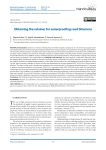
Obtaining the retainer for waterproofing road bitumens
Статья научная
Bitumen is a mixture of hydrocarbons and hetero-organic compounds. It is one of the most popular building materials today. Due to the growing consumption of bitumen for various purposes, the requirements for its quality characteristics are increasing, which prompts a comprehensive study of the physical and mechanical properties and methods of its modification. Currently, various additives are used, from inorganic materials to organic binders, including waste chemical, petrochemical and household industries. These additives create a nanodispersed structure inside the bitumen, which provides a change in the physical and mechanical properties in the required direction. Methods and materials. The work proposes a method for obtaining a fixer for waterproofing road bitumen based on nitrogen-containing organic compounds. The goal of research is to study the effect of the additive-derivative of triethylenediaminedicyan, which leads to the formation of a nanodispersed structure of bitumen of the “sol-gel” type, the quality indicators of which will meet the requirements of the new standard GOST 33133-2014 “Viscous road oil bitumen”. The object of the study is the bitumen production unit of workshop No. 14 of Gazprom neftekhimSalavat LLC, designed to produce commercial bitumen: oil road grades CB 90/130 in accordance with GOST 22245-90, used in road, civil and industrial construction as a binder and waterproofing material. Results and discussion. In the course of the study, the nature of the interaction and the effect of the modifier on the properties of bitumen, which ensure the production of nanostructured bitumen of the “sol-gel” type, were revealed. As a result of the study, a comparative assessment of the effect of the fixer on the properties of waterproofing bitumen revealed a significant improvement in physical and mechanical properties in comparison with bitumen grade CB 90/130. Conclusion. The obtained compound based on triethylenediaminedicyancan can be used as a fixing additive to road bitumen
Бесплатно
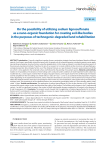
Статья научная
Introduction. Currently a significant number of quarry restoration strategies have been developed, based on different aspects of soil impact: specifically, mixing the topsoil with the empty rock of exhausted quarries; introducing organic waste; applying mulching and polymer structure formers; using the adapted plants. In this study we attempt to combine the positive aspects of the previously mentioned methods. Therefore, the aim of our research is to create artificial soil-like structures with specified agroecological properties. We anticipate further use of the obtained mixture as a layer between the quarry waste material and fertile soil, which is to be applied to the reclaimed surface and followed by the planting of local plant species. Materials and methods. Studies on the possibility of reclamation of mine tailings were conducted under conditions of model experiment with sodium lignosulfonate (SL), a waste organic material from the pulp and paper industry, as the organic base for the soil-like body. Fine fraction soil (FS) sampled from the mine tailings was mixed with SL in ratios of 1/0.5, 1/1, and 1/2; to accelerate the decomposition of organic matter depending on the experimental scheme, strains of bacteria Acinetobacter calcoaceticus and Pseudomonas kunmingensis were added. The obtained mixtures have been composting for three months at a room temperature, with regular mixing and maintaining moisture levels. The phytotoxicity of the obtained mixtures was assessed by germinating seeds of a short duration radish variety called "18 days". Results and discussion. The application of sodium lignosulfonate (SL) into the fine fraction soil (FS) significantly increased the organic matter content and decreased the acidity of the medium. The fertilizing with nitrogen in the SL experimental variants has led to a significant increase in the content of alkali-hydrolysable nitrogen compared to the variants in the absence of N and the presence of SL. Conclusion. The research results showed that the application of sodium lignosulfonate (SL) to the fine fraction soil (FS) contributed to a decrease in acidity, an increase in organic matter and alkali-hydrolysable nitrogen content in the mixture, as well as a reduction in substrate toxicity.
Бесплатно

On the properties of nano-modified cement stones
Статья научная
The use of nanotechnology in the construction industry improves its efficiency. The application of nano-modified materials makes it possible to reduce capital costs. Currently the introduction of nanomaterials is of great importance for the construction industry. Carbonaceous structures can be used as nano-modifiers. Carbon nanotubular material TUBALL produced by OCSiAl.ru LLC has been chosen. To perform research samples of single-layer and multi-walled carbon nanotubes were used as a part of cement heavy concrete. The optimal dosage of carbon nanotubes in the composition of cement concrete has been experimentally determined. The studies revealed that addition of TUBALL carbon nanotubes to the cement composition contributed to the formation of a mesh structure that resists the formation of shrinkable nanoscale cracks in the cement mortar, promotes the appearance of calcium hydrosilicates, increases the concentration of calcium ions at the start of the hydration period. The influence of modified nanoadditives in the composition of the complex additive on the mechanical properties of the cement composition has been considered. The complex of mechanical properties of cement nanoreinforced stone in the process of cementing the annular space of producing wells by X-ray and thermal methods of analysis has been studied. That confirmed the results of experiments performed with electronic and optical microscopy. The microstructural elements of the cement specimen were investigated with high-resolution auto-emission scanning electron microscope Merlin by CARL ZEISS. It was found that the addition of complex nanomodified additive TUBALL accelerates the curing of the cement composite at early stage of hardening, decreases value of shrinkable nano-cracks, that in turn positively characterizes the quality of contacts at the boundaries of cement-casing, rock-cement.
Бесплатно
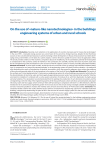
Статья научная
Introduction. Recently, much attention in the publications of scientists has been paid to “nature-like technologies” in the use of RES – renewable energy sources (sun, wind, heat). At the same time, foreign business, despite the fact that these sources are low concentrated and seasonal, is actively investing in their development. In Russia, these processes have been developing slowly, and therefore, on the basis of a system analysis, it seems relevant to justify the correct vector of application of RES. The article provides evidence of the insolvency of opinions about the insufficiency of the assimilation potential of the biosphere to compensate for the economic activity of mankind. In this connection, the scientific, technical and socio-economic tasks arise for the “reengineering of the technosphere” in the structure of the life support systems of society, including educational facilities. Methods and models. To solve these scientific, technical and socio-economic issues, by analogy with individual residential buildings, it is proposed to use “nature-like nanotechnologies” in the engineering systems of schools, and for evaluation - the method of retro-forecasting the results of introduction of domestic innovations, which has proved its adequacy when solving the problems of fire and environmental safety of the technosphere in the regions of the South of Russia. Results and discussion. The results of the synthesis and “virtual implementation” of autonomous engineering systems for school buildings are presented, which allow for the decentralization of electricity, water and heat supply by generating resources (water, heat and electricity) using the “Shukhov wind-electric installations” combined with a vortex system extraction of moisture of air, with their duplication by hydro panels and solar batteries. The calculations have demonstrated that the putting into production of such domestic innovations and the «reengineering» with their help of the engineering systems of 40 thousand Russian schools will allow autonomization and proper electricity, water and heat supply, which will ensure their safe functioning in compliance with GOST 12.1.004. Moreover, after the introduction of an autonomous engineering system in the school, due to the annual savings in budget subsidies for “pedagogical services”, it becomes possible to increase the monthly salary of each school teacher by 30–40 thousand rubles. Conclusion. The conducted studies confirm the results obtained in the synthesis of autonomous engineering systems for individual residential buildings, unequivocally determining the place of RES in the structure of resource supply systems for cities and rural settlements.
Бесплатно
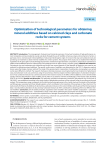
Статья научная
Introduction. The management of physical and chemical processes of structure formation of high performance cement composites can be provided at several scale levels through the use of modifiers of various nature and mechanism of action, in particular, micro- and nanoscale mineral additives of natural and technogenic origin. It is known that clays and carbonate rocks are promising raw materials to obtain mineral modifiers for cement systems. The purpose of this study was to establish the influence regularities of the prescription and technological parameters (material and granulometric compositions, temperature calcination) to obtain mineral additives based on calcined clays and carbonate rocks on their activity in cement systems. Methods and materials. Polymineral clays and carbonate rocks (dolomite and chalk) from several deposits of the Republic of Mordovia were used as raw materials for obtaining mineral additives. The specific surface area of modifiers was determined on the PSX-12 dispersion analysis device using the Kozeny-Carman method. The study of the granulometric composition of sedimentary rock powders was carried out by laser diffraction method. The research of physical-chemical processes occurring during the heat treatment of polymineral clays and carbonate rocks was carried out using the synchronous thermal analysis method. Optimization of calcination temperature of clay-carbonate mixtures was carried out based on the research results on the effect of their additives on the cement binder activity with the determination of the modifier activity index in accordance with the methodology of the Russian State Standard GOST R 56178-2014. Results and discussion. The optimum calcination temperature, located for polymineral clays in the area of 500–800оC, was established according to the study results of dehydration processes of clay minerals using the synchronous thermal analysis. This temperature range corresponds to the initial restructuring processes in the crystal structure of minerals of the kaolinite and illite groups, associated with their dehydroxylation, which contributes to the transition of these phases to the active form. The study results of influence of additives of calcined clay-carbonate mixtures on the cement binder activity proved the thermal analysis data. It was found that calcination of clays and clay-carbonate mixtures at 700°C contributes to obtaining of the most effective mineral modifiers. Conclusions. On the totality of studies, regularities were revealed in the system “modifier composition – calcination temperature of sedimentary rocks – mixed binder activity”, which allow optimizing the prescription and technological parameters for obtaining mineral additives to achieve the required level of strength characteristics of cement composites.
Бесплатно
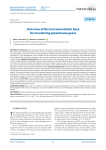
Overview of the instrumentation base for monitoring greenhouse gases
Статья научная
Introduction. The article describes the results of a comparative analysis of three large companies presenting on the market close control equipment for the control of climatically important parameters: LI-COR, Picarro and Gasera, and using nanotechnologies; the urgency of the ecological problem of finding a technical solution for the control of climatically active gases, including CO2 in the atmospheric air, was studied. The aim of the work is to analyze the world leaders in the production of precision equipment for monitoring greenhouse gases in the manufacture of nanomaterials and in scientific centers for the study of climate change. Methods and materials. The study is based on the information from open information sources, materials and reviews of various fields of knowledge made by scientific researchers, who describe the features of the activities of these companies or are directly involved in product development, and then compile a report on their work. The article contains information from true sources, namely from the official websites of companies, which describes their history of creation and development process. Research methods are benchmarking and SWOT analysis. Results and discussion. The study carried out a comparative analysis of companies in terms of the duration of work in world markets and its impact on the quality and technical features of products. The article provides information about companies that have achieved very good results from the beginning of their foundation to the present. The species diversity of old and new generation quality control devices sold in markets around the world by the companies in question is the same, which leads to very high competition. A description of the companies’ operations, their location, coverage of consumers is given, as well as the annual income from the sale of products, the amount of work that they do in the course of their activities. Conclusion. It was revealed that the companies LI-COR, Picarro, Gasera carry out the production of quality control devices that reproduce the required measurement parameters. Gas-analyzers of the companies are in demand in the market of precision control devices used to capture greenhouse gases in order to develop building nanomaterials, scientific research on the climate problems of modern society.
Бесплатно
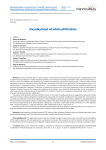
Oxyalkylated alcohols phthalates
Статья научная
Polyvinyl chloride (PVC) is used to obtain a wide range of materials for various purposes. High demand of PVC is explained by possibility to modify polyvinyl chloride and produce broad range of materials with improved properties as well as to have cost efficient ratio: productivity, available raw materials, saving of natural resources. However, under normal temperature polyvinyl chloride is brittle and inelastic, that limits the fields of PVC application. The production of basic PVC compositions is impossible without plasticizers – low-molecular compounds that allow direct regulating physical and mechanical properties of polymer. Production of plasticizers became one of the most important branch of petrochemical industry. Recently, however, the range and production of plasticizers have drastically decreased due to the increased cost, which reduced the competitiveness of plasticized PVC products. Therefore, the expansion of plasticizer variety for PVC is a strategic task of great practical significance. The present work describes synthesis methods of esters on the basis of oxyalkylated alcohols suggested as polyvinyl chloride plasticizers. Physico-chemical properties of synthesized compounds were studied. Conditions for their production with maximum outcome were selected. The results of experiments in which obtained compounds were tested as additives in the plasticization of PVC showed that the obtained samples of cable plastic, adhesive PVC tapes and multi-layered polyvinyl chloride linoleum satisfy all the technical requirements by the main indicators: cable plastic compound – GOST 5960-72 with amendment 1-9; a PVC adhesive tape – Technical Conditions – 2245-001-00203312-2003; multilayered linoleum – GOST 7251-77. According to the experimental results, phthalates of oxyalkylated alcohols possess rather high efficiency as plasticizers of polyvinyl chloride and are recommended for use in the above-mentioned industrial PVC recipes.
Бесплатно
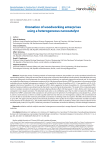
Ozonation of woodworking enterprises using a heterogeneous nanocatalyst
Статья научная
Despite the variety of existing methods of wastewater treatment, this problem can not be considered solved for the woodworking industry. Taking into account that the waste water of plywood-board plants includes phenols, formaldehyde and many other toxic substances, the development of a method for their treatment is an extremely important and actual task. In this regard, we studied the effectiveness of wastewater treatment of the Ufa plywood-board factory (UPBF) by ozonation in the presence of the available and most studied heterogeneous catalysts: Fe2O3, applied in the form of nanofilms of 0.5–1.0 mm particles γ-Al2O3; Al2O3, applied in the form of nanofilms 2.5–3.0 mm particles of TiO2; MnO2, applied in the form of nanofilms 2.5–3.0 mm particles of TiO2. Optimal cleaning conditions were determined by the kinetic curves of phenol decomposition. The results of the conducted experiments on catalytic ozonation of wastewater showed a high purification effect. COD decreased 1.7 (Al2O3, MnO2) and 3 times (Fe2O3) compared to non-catalyst ozonation. The obtained results allow us to confidently assert that in order to improve the efficiency of treatment of UPBF’s wastewater needs ozonation to be carried out in the presence of a heterogeneous nanocatalyst Fe2O3, which is used in a small amount, so there is no need to purify water from iron (III) ions as in homogeneous catalysis. The concentration of iron ion (III) did not exceed the maximum permissible concentration in drinking water (0.3 mg/dm3). The effect of treatment of COD is up to 96%. The paper presents physical and chemical parameters of the quality of the original wastewater and after ozonation in the presence of the catalyst Fe2O3. The studied method of purification makes it possible to reduce the content of phenol to the standard quality index (0.01 mg/dm3). Preliminary ozonation of wastewater increases the efficiency of further biological treatment.
Бесплатно
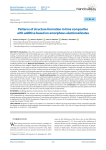
Patterns of structure formation in lime composites with additive based on amorphous aluminosilicates
Статья научная
Introduction. One of the reasons for coating destruction enclosing structures is the formation of condensate at the boundary of the fence and the finishing layer. As a result of external impact and freezing of moisture in the pores of the plaster coating, a network of small cracks is formed, and it is also possible to peel off the finishing layer. To test this hypothesis, the facades of three different buildings were examined. It is established that all the studied plaster coatings are made on the basis of cement mortar. It is also known that lime mixture is used less often due to the lack of sufficient resistance to moisture. Therefore, there is a need to increase the resistance of coatings based on lime compositions. This can be achieved by introducing an alumosilicate-based modifying additive into it. Materials and methods. Liquid sodium glass, aluminum powder PAP-1 and distilled water were used for the synthesis of the additive. Slaked lime (pushonka) with an activity of 84% was used to prepare test samples. Fritsch particle sizer Analysette 22 was used to analyze the granulometric composition of the additive. Compressive strength was determined on the samples measuring 20×20×20 mm. A testing machine of the type “IR 5057-50” was used for the study of compressive strength of samples. The analysis of rheological properties was determined by the Shvedov-Bingham equation. To study the plastic strength (ultimate shear stress) of the finishing mixture, a conical plastometer KP-3 was used. The plastic viscosity of the composition was determined with a rotary viscometer BCH – 3. Results and discussions. The synthesized additive is a light powder of light gray color with a bulk density of 0.55 ± 0.05 g/cm3. The synthesized additive revealed a high content of oxides Al2O3, SiO2, Na2O respectively, amounting to 51.03%, 36.36%, 11.89%. The additive consists of particles of 100.0–200.0 microns, which make up more than 20% of the total composition. The influence of an aluminosilicate additive on a lime binder on rheological properties was investigated, a slight increase in static shear stress was revealed, respectively, an increase in the percentage of the additive. The value of the dynamic shear stress increases significantly with an additive content of more than 10%. Conclusions. The regularities of hardening of a lime binder with a nanostructured additive based on amorphous aluminosilicates are established, and the optimal content of an aluminosilicate additive in the amount of 10% by weight of lime is determined.
Бесплатно
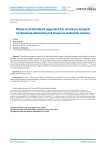
Статья научная
The authors developed a notion of the three-dimensional matrix of chemical elements, which made it possible to eliminate the main disadvantages of tabular forms of the structure of chemical elements developed by D.I. Mendeleev and the international community of IUPAC chemists. The three-dimensional structure is represented as an expanding conic matrix. At the same time, all known chemical elements up to number 118 are combined into four blocks. The block-structure made it possible to substantiate an electron-level formula, even for the proposed new chemical elements of the 5th block E with numbers 119 through 218. This allows for the development of a digital model for calculating interactions of chemical elements and obtaining new types of compounds and materials.
Бесплатно
Peculiarities of the formation of silicon oxide films modified with metal nanoparticles
Статья научная
Introduction. Silicon oxide film coatings have unique properties and are widely used in various industries, including construction. This paper presents the results on the preparation of polyalkylhydroxysiloxane liquid film in the presence of nanoscale particles of metallic bismuth. Methods and materials. Laser ablation method of metallic bismuth in aqueous medium was used to obtain bismuth nanoparticles. The surface of the target was treated with a laser beam at the workstation of an ytterbium pulsed fiber laser are discussed. The particle size and electrokinetic properties of colloidal bismuth sols were determined method by dynamic light scattering. After drying, Bi powder was added to polyalkylhydroxysiloxane liquid. Thin films cured under different heat treatment modes are applied to glass substrates by dipping. The resulting films were characterized by SEM, X-ray phase analysis, and FTIR spectroscopy. Results. In this work, the electrokinetic properties of colloidal bismuth sols are discussed. Laser ablation of a bismuth substrate leads to an increase in electrical conductivity and the appearance of a double electric layer in colloidal sols. The effect of the curing temperature on the properties of the coating is shown. It was found that the content of bismuth nanoparticles in the polyalkylhydroxysiloxane coating (3 wt.%) does not lead to the formation of crystalline phases. At the same time, the composition of the film and the mode of heat treatment affect the short-range order of molecular bonds. Increasing the content of bismuth nanoparticles in the coating of more than 10 wt.% leads to the appearance of microcrystalline phases of bismuth silicates in the system. Conclusion. The results obtained in the course of the study supplement the information about the production of bismuth nanoparticles by laser ablation and are of great importance in the practice of creating composite films.
Бесплатно
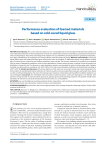
Performance evaluation of foamed materials based on cold-cured liquid glass
Статья научная
Introduction. The current trend of transition to non-combustible and environmentally friendly thermal insulation and sound-absorbing materials involves development of research to obtain foamed silicate compositions, particularly those based on cold-cured liquid glass. The primary advantage of this material is its eco-friendliness throughout both its operational and production stages, facilitated by the employment of energy-efficient manufacturing technology. Materials and methods. Cold-cured liquid sodium glass and cullet-based foam glass were used as main raw materials. To determine optimal curing additive of liquid glass, Portland cement, slaked lime and sodium ethylsilicate were selected. The thermal conductivity of materials was evaluated with by means of appropriate coefficient, value of which depended on volume content of pores in material, nature of porosity and distribution of pores by size. The decrease in water absorption capacity was estimated by value of wetting edge angle. Sorption humidity was determined in accordance with GOST 24816-2014, and sound absorption coefficient was determined according to GOST 16297-80. Results and discussion. The prime objective of this study was to examine trends and provide explanations for the formation of specified performance indicators of thermal insulation and sound-absorbing materials, particularly those based on cold-cured foamed liquid glass. The issue of increasing water resistance of material by selecting effective additive-hardener was also investigated. Conclusion. The developed thermal insulation material based on cold-cured liquid glass is eco-friendly, with presence of large number of small and mainly open pores, giving it good sound-absorbing properties. The problem of high-water absorption of material was solved by introducing Portland cement as a curing additive.
Бесплатно
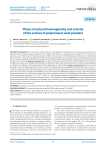
Phase-structural heterogeneity and activity of the surface of polymineral sand powders
Статья научная
Introduction. The value of the specific surface (Ssp), the degree of crystallinity (С, %) and surface activity (ks) plays an important role in creating various compositions. The increase in the size of Ssp is associated with a change in the “С” of rock powders, the value of which characterizes the properties of fillers. The reactivity of the finely dispersed material can be determined by the value of ks, which allows quantifying transition of the potential energy into free surface energy by activating the surface of the raw material. Therefore, determining the functional relationship between the parameters characterizing the reactivity of rock powders is an urgent task. Methods and Materials. Four deposits of polymineral construction sands are selected as raw materials. To obtain fine powders, the samples were ground by dry dispersion. The specific surface area of rock systems was determined by gas sorption. Crystallinity was calculated from the X-ray diffractogram of the samples. Results and Discussion. The certain sizes of specific surfaces for highly dispersed rocks have shown, that deposits “Kenica” and “Nekhtskoye” possess the greatest values Ssp. The study of the phase-structural heterogeneity of the samples, showed a significant increase of the content of the amorphous phase. At the same time, the degree of crystallinity for the sands “Kenica” and “Nekhtskoye” deposits decreases 25%. The functional relationship between the surface activity and the shares of the amorphous component (c) for highly dispersed sands was characterized by mathematical expression ks = 21•10–6•c+0,58•10–6. The identified dependence demonstrates the relationship between the parameters of the phase-structural heterogeneity and ks of fine-dispersed samples. Conclusion. The results obtained showed that mechanical dispersion contributes to the activation of raw materials. This is due to the breakability of the crystal structure of minerals and the texture of the raw materials. These characteristics are reflected in the value of the activity of the surface of finedispersed systems of the rocky rocks.
Бесплатно
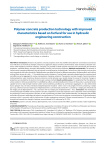
Статья научная
Introduction. Research of polymer concrete properties show that it differs favorably from conventional concrete by such indicators as mechanical strength, resistance to aggressive impact of various environments, water resistance, abrasion resistance, water-repellency and frost resistance. Currently, it is possible to obtain polymer concrete with characteristic and chemical properties –specified density, strength, deformability, ductility, and corrosion resistance. Methods and materials. The research is carried out by comparing laboratory tests of polymer concrete based on furfural binder. Furfural has a high reactivity and can form resin compounds with many chemicals. Diphenylamine was added to furfural in different proportions. Benzenesulfonic acid, sulfuric acid and their mixture at a ratio – 1:1 by weight were used as hardeners. Crushed sand or ground andesite based on nanostructured microfiller served as aggregate for various compositions of polymer solutions. The polymer concrete strength, chemical resistance, lasting properties, water resistance, abrasion resistance, metal adhesion were tested during the research. Structural changes in properties were studied by the electron microscopic analysis method. Results and discussion. It is established that the diphenylamine solution in furfural, provided that it is solidified by sulfuric acid, benzolsulfoacid or mixture of these acids, is a polymer binder capable to form a high-strength material under normal hardening conditions by acid-resistant aggregates. It is also determined that to prepare resin, the ratio of furfural and diphenylamine should be within 1:0.5–0.3 by weight. The resin containing 1 weight part (w.p.) of furfural and 0.5 weight part of diphenylamine is conventionally named FD-1; containing 1 weight part of furfural and 0.4 weight part of diphenylamine – FD-2 and resin with 0.3 weight part of diphenylamine – FD-3. Conclusion. The introduction of nanostructured microfiller into the polymer concrete composition could save expensive resin. Comparison of the technologies for producing FD resin and polymer concrete, as well as preliminary test data of the studied materials, can determine the possible technical and economic advantages of polymer concrete based on FD resin over the polymer concrete based on FA (furfurolacetone) monomer which is currently used in construction of hydro-engineering structures. Polymer concrete based on FD resin has high strength and exceeds the strength of polymer concrete based on FA monomer by 20–25%.
Бесплатно
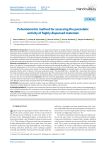
Potentiometric method for assessing the pozzolatic activity of highly dispersed materials
Статья научная
Introduction. Pozzolatic activity is an important indicator for highly dispersed materials, particularly clay soils. It determines their effective use and characterizes the ability of the active components in their composition to interact with calcium hydroxide. Various methods are employed to assess this pozzolatic activity. Potentiometric methods are effective. They are based on measuring the electrode potential, which is functionally related to the change in the concentration (activity) of calcium ions in the analyzed solutions as the main information parameter of the pozzolatic reaction. The purpose of the research is to test the potentiometric method to assess the pozzolatic activity of highly dispersed materials, as well as the application of suggested approach to determine the rational amount of an active mineral lime-containing additive as a binder component for producing soil-concrete. Materials and Methods. We have chosen clay soil models with different plasticity index and sandy loam of the Arkhangelsk region as the objects. The potentiometric analysis method involved sequentially adding 0.015 mol/l calcium hydroxide solution, in amounts ranging from 0.2 to 0.8 ml, to a suspension containing 0.5 g of soil in 80 ml of distilled water. The potential of the system was measured while continuously stirring at a fixed speed. Results and Discussion. All studied objects are characterized by the pozzolatic activity, which increases in the series sandy loam sandy → clay loam light silty → clay light silty ≈ sandy loam silty and has the order of absolute values coinciding with the literature data. The rational amount of the active mineral lime-containing additive was 1–2% for clay soil models, depending on the plasticity index, and more than 2 % for the sandy loam of the Arkhangelsk region (from the soil mass on dried basis). Conclusion. We have shown the applicability of the potentiometric method of analysis using a calcium-selective electrode to assess the pozzolatic activity of highly dispersed materials on the example of models of clay soils with different plasticity index and sandy loam of the Arkhangelsk region.
Бесплатно
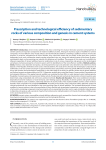
Статья научная
Introduction. Active mineral additives that allow controlling the structure formation processes and properties of cement systems are important components of modern modified concretes. Among the numerous types of modifiers for cement composites, the most effective ones include siliceous and aluminosilicate additives containing a significant amount of nanoscale particles, in particular, nanoparticles of silicon dioxides, clays, aluminum oxides and iron oxides. At the same time, common sedimentary rocks, such as diatomites, trepels, opokas, polymineral clays, etc., along with industrial wastes (silica fumes, fly ashes, metallurgical slags) can be promising raw materials for obtaining such modifiers. The purpose of this study was to establish the influence regularities of mineral additives based on sedimentary rocks of various composition and genesis on the technological and physico-mechanical properties of cement systems with the identification of the most effective modifiers. Methods and materials. Siliceous rocks (diatomite and opoka), calcined polymineral clays and carbonate rocks (dolomite and chalk) from several deposits of the Republic of Mordovia were used as mineral additives. The study of the chemical and mineralogical composition of sedimentary rocks was carried out using X-ray spectral fluorescence spectrometry and X-ray powder diffraction methods. In addition to the chemical and mineralogical composition, at the initial stage of the study, the specific surface area of mineral additives and Portland cement was determined on the PSX-12 dispersion analysis device using the Kozeny-Carman method. Prescription and technological efficiency of the applied mineral modifiers was evaluated by their effect on water demand, water-holding capacity, flowability of cement paste and mixed cement binder activity. The physical and mechanical characteristics of cement systems were determined using standardized and well-known authorial methods. Results and discussion. There were established correlation dependences between indicators of water demand, water-holding capacity, flowability of cement systems and specific surface of mineral additives used. In addition, relationship between the activity index of the studied modifiers and the content of silicon dioxide in their composition was revealed. Conclusions. According to the totality of the conducted studies, diatomite, opoka and calcined polymineral clay were identified as the most promising types of mineral additives. The increased effectiveness of these modifiers in cement systems is due to the peculiarities of their chemical and mineralogical composition, in particular, the presence of active silica-containing components (reactive minerals with an amorphized structure) such as opal-cristobalite-tridymite phase in diatomite and opoka as well as products of partial thermal destruction (dehydroxylation) of minerals of kaolinite and illite groups in the calcined polymineral clay.
Бесплатно
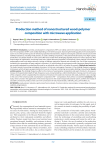
Production method of nanostructured wood-polymer composition with microwave application
Статья научная
Introduction. Currently, wood-polymer compositions (WPC) are widely used in the national economy and construction. The composition of WPC varies widely depending on the further purpose. Improving the binding quality in the wood-polymer system is one of the promising areas for enhancing operational characteristics. Organic and inorganic substrates nanostructured with individual substances, including metal particles, are used as binding components. In the petrochemical industry, most high-capacity productions use catalysts based on active carriers like heavy metals when developing targeted products for various purposes. After several stages of regeneration, recovering these heavy metals becomes impossible. Consequently, spent catalysts accumulate in sedimentation tanks and sludge collectors, lacking an efficient method for disposal and secondary use. One of the components included in the composition of spent catalysts is chromium (+6), which belongs to carcinogenic metals. Numerous disposal methods are currently inadequate for neutralizing this metal on an industrial scale, which is of interest for research. Methods and materials. The study is aimed at converting carcinogenic chromium (+6) into non-carcinogenic chromium (+3) by ultrahigh frequency exposure (microwave), which will open up opportunities for its use as a chromium-containing nanocomplex binding a tree-polymer. Results and discussions. The ultrahigh-frequency effect on the mixture of wood-polymer composition and spent chromium (+6) causes an increase in the penetration depth of high–frequency waves, characterized by a uniform distribution of energy over the entire area of the composite, which is explained by the reduction of chromium (VI) oxide into chromium (III) oxide, and there is also a change in the color of the nanostructured wood-polymer composition (WP – compositions) from yellow to malachite. Conclusion. This study, which consists in the application of microwave exposure to the wood-nanoparticle-polymer system, confirms the receipt of a durable construction product and its use in the construction of roofs, facade boards, sidewalks, piers, port facilities, etc.
Бесплатно

